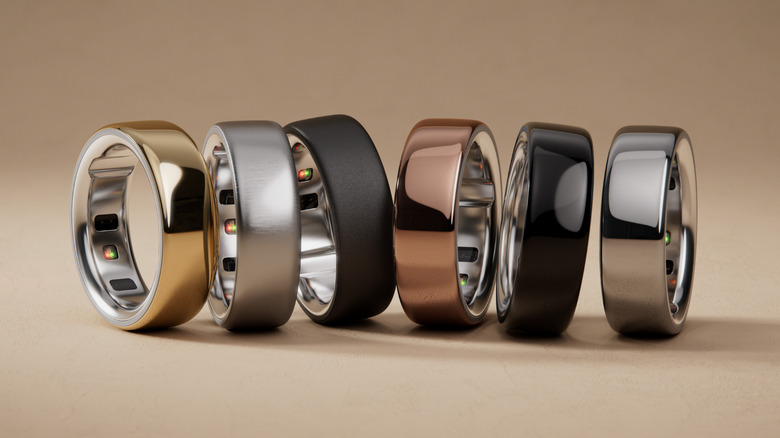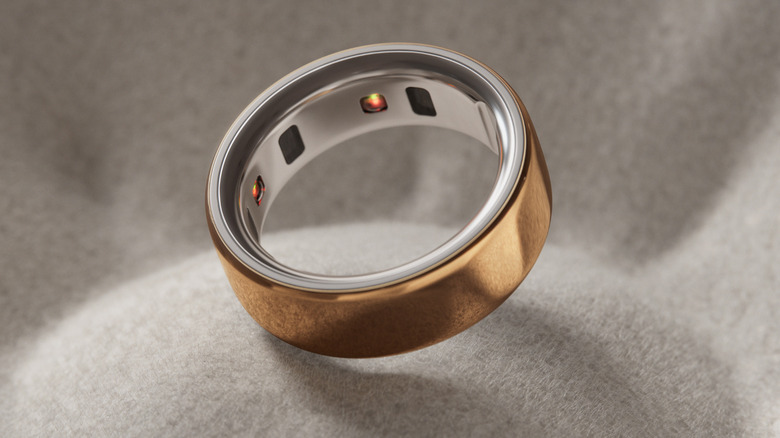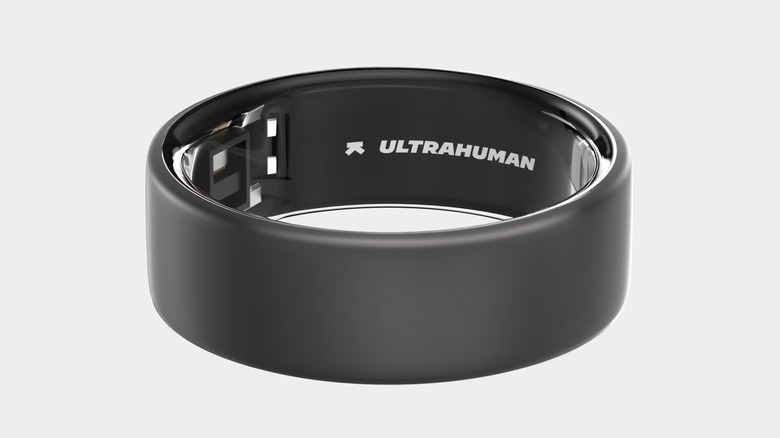Oura Vs. Ultrahuman Ring: How Do They Compare? It Depends On Your Needs
We may receive a commission on purchases made from links.
Based on sales alone, the biggest name in the smart ring space is Oura, which was launched in 2015 and is currently on its fourth iteration, the Oura 4. It boasts over a million members, but it faces stiff competition from other smart ring brands, including Samsung and RingConn. Ultrahuman is its closest contender for the wearable tech crown.
When we ranked smart rings in October 2024, Oura came first, with Ultrahuman taking second place. Both have a comprehensive range of metrics based on your sleep, movement, temperature, and heart rate, and both look like stylish pieces of jewelry rather than tech and are reported to be comfortable to wear. These are two of the lightest smart rings on the market at the moment. Oura has more colors available in its standard range, but Ultrahuman has really embraced the jewelry aesthetic with its eye-wateringly expensive Rare versions.
Oura is available in twelve different ring sizes, and Ultrahuman has ten. As a good fit is necessary for accurate scores, both Oura and Ultrahuman will send you a size testing kit beforehand. While Oura has a longer battery life of eight days (under ideal conditions), Ultrahuman's battery life of six days is also very good. Importantly, they work with both iOS and Android phones. In many ways, Oura and Ultrahuman are very similar. So how do you choose between them?
Oura is best if you want third-party apps
One of Oura's best features is its compatibility with other apps. It can integrate with hundreds of third-party applications, including Apple Health, Google Health Connect, MyFitnessPal, Strava, and Headspace. However, it's worth remembering that the Oura subscription fee doesn't cover the cost of the paid apps. If you want to integrate your Strava stats, for example, with your Oura Ring app, you'll need to pay for a separate Strava subscription. Ultrahuman doesn't offer the same level of third-party integration, although it does have its own library of native apps called PowerPlugs.
Another bonus with Oura is its Automatic Activity Detection feature that can automatically detect what type of sport or activity you're doing, unlike Ultrahuman, which needs to be told. Oura also has a Rest mode, enabling you to pause your Activity Goals and Scores while you're ill or injured. The Oura app adjusts other metrics like readiness and sleep while you recover. There isn't a way to tell Ultrahuman you're unwell, so according to these Redditors, it berates you for letting your standards slip.
At $349 to $499 for the ring alone, plus $69.99 for a yearly subscription, Oura 4 isn't cheap. You can use it without the subscription, but you will only have access to a small fraction of its features. According to one Best Buy reviewer, a ring without a subscription is "nearly useless." If you don't mind paying a monthly subscription charge, it might be the best choice for you.
Ultrahuman is best if you want an in-depth fitness tracker with no mandatory subscription
If you hate the idea of being tied into a monthly subscription, Ultrahuman might be a better option for you. An Ultrahuman ring costs $349, which is the same as the Oura silver and black versions. Unlike Oura, you can get matte and gold finishes without paying extra. The real cost saving is in not needing a monthly subscription. Movement counters, sleep tracking, stress monitoring, ovulation insights, and more are included in the price of the ring itself.
You'll still need to pay subscription fees if you want extra features like the Cardio Adaptability add-on, which costs $24 per year. You can also purchase M1 sensors that you attach to your skin to measure your sugar levels in real-time and give you feedback on what you eat. Patches cost $299 for one month's supply of two patches, although you can save money by paying for a yearly subscription. These are optional extras, though, and the Ultrahuman ring gives you plenty of features without having to sign up for anything else.
Although many of the features are the same as Oura's, Ultrahuman provides more in-depth data and has a more proactive attitude to keeping you on track by sending regular updates and reminders. This was a welcome feature for this Amazon reviewer who wants their smart ring to behave like a fitness coach. Many reviewers, including the Amazon fan above and these Redditors, say that Ultrahuman's metrics are more accurate than those of its competitors. For hard-core fitness enthusiasts who want to be kept on track and aren't overwhelmed by masses of data, Ultrahuman is a great option.
Methodology
To write this article, we carried out extensive research using information provided by Oura and Ultrahuman online. We also consulted consumer and professional reviews, including SlashGear's own published write-ups of each product.
We considered numerous criteria, including price, battery life, comfort, style, and the number and type of features that each smart ring offered. All prices and features mentioned apply to US readers only. Both Oura and Ultrahuman are international companies — Oura is based in Finland, and Ultrahuman is based in India –- and will ship worldwide. The price and features available may vary depending on where you live. For example, in the UK, Ultrahuman offers Atrial Fibrillation monitoring, which detects irregular heart rhythms, as a paid add-on. This is not currently available in the USA, although the website says that it is coming soon.



